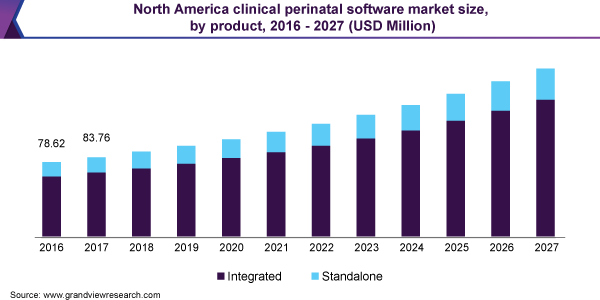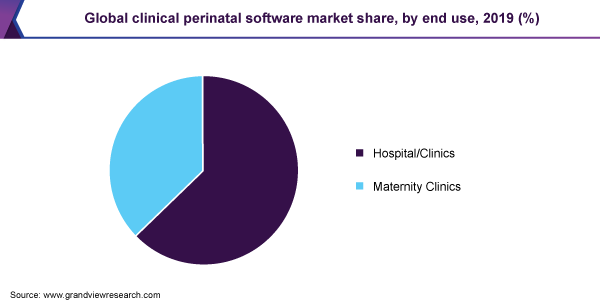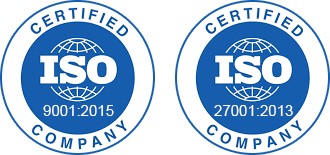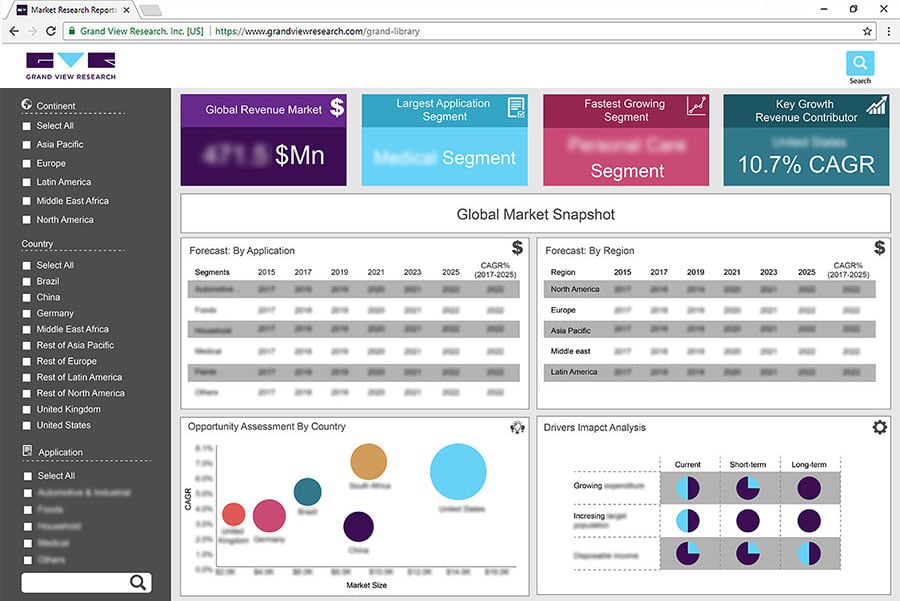- Home
- »
- Healthcare IT
- »
-
Clinical Perinatal Software Market Size Report, 2020-2027GVR Report cover
![Clinical Perinatal Software Market Size, Share & Trends Report]()
Clinical Perinatal Software Market Size, Share & Trends Analysis Report By Product, By Deployment Model, By Application (Fetal Monitor Data Services, Workflow Management), By End Use, And Segment Forecasts, 2020 - 2027
- Report ID: GVR-4-68038-673-8
- Number of Report Pages: 100
- Format: PDF, Horizon Databook
- Historical Range: 2016 - 2018
- Forecast Period: 2020 - 2027
- Industry: Healthcare
Report Overview
The global clinical perinatal software market size was estimated at USD 203.1 million in 2019 and is expected to witness a compound annual growth rate (CAGR) of 8.3% from 2020 to 2027. The steep rise in birth rate coupled with the growing number of post-date pregnancy is expected to drive the market growth. As per the Stillbirth Center of Research Excellence in 2016, one in every 137 women reaching 20th week of gestation is predicted to have a stillbirth child in Australia. These statistics demands an effective clinical perinatal software solution, contributing to the revenue growth. Moreover, rapid technological upgrades in perinatal software and increasing adoption of healthcare IT is further enhancing the adoption thereby promoting growth.

Moreover, rising healthcare spending and government initiatives for creating awareness among people have led to an increase in the use of the software, ultimately driving the revenue. For instance, in 2016, The Centers for Disease Control and Prevention (CDC) recognized (Perinatal quality collaborative) PQCs for improvising perinatal health and provide a variety of online resources to support them.
The provision of quality healthcare along with the adoption of the newest software across maternity clinics and hospitals is further boosting the revenue. Moreover, the usage of 3D images helps to display adequate details pertaining to the health of fetuses and women. Furthermore, the availability of smartphone apps offering ample information regarding pregnancy and post-pregnancy helps to create awareness among patients during their check-ups.
Moreover, increasing the birth rate in the developed countries, natal mortality and preterm births due to lack of diagnosis and obstetric care have also fueled the demand for perinatal software devices in hospitals and clinics. According to the American health ranking report, in the year 2019, the birth rate in the U.S. is 12 births per 1000 people and infant mortality is six deaths out of 1000 live births. Moreover, increasing disposable income in developing countries and huge untapped opportunities in healthcare is boosting the market growth.
Product Insights
Based on the product, the clinical perinatal software market is segmented into integrated and standalone software. The integrated segment held the largest revenue share of around 80% in 2019. The segment is also anticipated to register the fastest CAGR during the forecast period, attributed to the increasing demand for workflow integration of medical professionals. Factors such as technological advancements and rising product adoption are further boosting the segment growth.
Standalone product segment held a substantial share in terms of revenue in 2019. Standalone clinical perinatal software are meant to address only specific operations at a time, hence they are focused and highly detail-oriented. However, the disadvantages associated with the product, such as lack of data integration and add-on options are expected to limit the growth of the segment over the forecast period.
Deployment Model Insights
On basis of the deployment model, the market is segmented into on-premise and cloud-based. On-premise segment held the largest revenue share of over 70% in 2019. This dominance can be attributed to advantages such as data security, easy retrieval, and ease of access. Moreover, the customization option and reduced IT overhead cost are the factors propelling the growth of the segment.
Cloud-based software is expected to exhibit the fastest CAGR over the forecast period. The growth can be attributed to real-time tracking and remote access to data. Moreover, advanced features such as high accessibility, increased flexibility, insignificant handling costs, and easy data backup are anticipated to boost the growth of the segment in the forthcoming years.
End-use Insights
On basis of end use, the market for clinical perinatal software is segmented into hospitals/ clinics and maternity clinics. The hospitals/ clinics segment dominated the market with a revenue share of over 60% in 2019. The large footfall and availability of advanced software within these facilities are the factors contributing to the large revenue share of this segment. Most hospitals collaborate with various insurance companies for better and faster reimbursement procedure, thus increasing product adoption.

Maternity clinics end use segment is expected to exhibit the fastest CAGR over the forecast period. Increasing number of maternity clinics in developed, as well as developing countries, is the primary growth driver for this segment. Rising disposable income and awareness are other significant factors driving the growth of the segment in the forthcoming years.
Application Insights
On basis of application, the market is segmented into fetal monitor data services, workflow management, and patient documentation. The fetal monitoring data services held the largest revenue share of over 50% in 2019. It provides accurate and adequate monitoring of fetal heartbeat and uterine contraction. Moreover, mobile fetal monitoring allows the patients to remotely access the data regarding the baby’s development, thus propelling the growth.
Workflow management software is expected to exhibit the fastest CAGR over the forecast period. The growth can be attributed to increasing demand for automated workflow solutions and a growing number of hospitals and maternity clinics worldwide. Moreover, the other advantages such as simplification of complex administrative procedures, real time data and increased productivity are further boosting the revenue.
Regional Insights
In terms of region, North America held the leading revenue share of over 45% in 2019 and is anticipated to continue this trend over the foreseeable future. The growth can be attributed to various factors such as high disposable income, the presence of technologically advanced healthcare infrastructure, and rising awareness among patients. The region accommodates several Healthcare IT vendors that work on perinatal and neonatal care around the world. These companies are focusing on launching new products and strategic collaborations with other industry players.
Asia Pacific market for clinical perinatal software is projected to expand at a lucrative CAGR during the forecast period, due to the increasing government initiatives to support healthcare IT adoption. Moreover, the rising adoption of healthcare facilities in emerging countries such as China and India is further propelling revenue growth. For instance, in March 2015, Philips and HealthMap Diagnostics entered into a Public-Private Partnership (PPP) agreement that created a market for sustainable diagnostics networks affordable for the low-income population thereby driving the regional market growth.
Key Companies & Market Share Insights
The industry players are involved in various strategies such as new product launches, regional expansions, strategic collaborations, and mergers and acquisitions. For instance, In June 2019, Huntleigh collaborated with Clinical Computer Systems Inc. to launch OBIX fetal monitor in the U.S. This system easily detects and tracks the fetal pulse with sensitive ultrasound transducers and also supports labor settings. In March 2018, Qiagen collaborated with Natera, a genetic testing company, for the assay development for the non-invasive prenatal testing. Some of the prominent players in the clinical perinatal software market include:
-
Cerner Corporation, PeriGen Inc.
-
Koninklijke Philips NV
-
Trium Analysis Online
-
Edan Instruments Inc.
-
K2 Medical Systems
-
Huntleigh Healthcare Limited
-
Clinical Computer Systems
-
General Electric (GE)
Clinical Perinatal Software Market Report Scope
Report Attribute
Details
Market size value in 2020
USD 218.3 million
Revenue forecast in 2027
USD 382.5 million
Growth Rate
CAGR of 8.3% from 2020 to 2027
Base year for estimation
2019
Historical data
2016 - 2018
Forecast period
2020 - 2027
Quantitative units
Revenue in USD million and CAGR from 2020 to 2027
Report coverage
Revenue forecast, company ranking, competitive landscape, growth factors, and trends
Segments covered
Product, deployment, end use, application, region
Regional scope
North America; Europe; Asia Pacific; Latin America; MEA
Country scope
U.S.; Canada; U.K.; Germany; France; Italy; Spain; China; India; Japan; Australia; South Korea; Brazil; Mexico; Argentina; South Africa; Saudi Arabia
Key companies profiled
Cerner Corporation; PeriGen Inc.; Koninklijke Philips NV; Trium Analysis Online; Edan Instruments Inc.; K2 Medical Systems; Huntleigh Healthcare Limited; Clinical Computer Systems; General Electric (GE)
Customization scope
Free report customization (equivalent up to 8 analysts working days) with purchase. Addition or alteration to country, regional & segment scope.
Pricing and purchase options
Avail customized purchase options to meet your exact research needs. Explore purchase options
Segments Covered in the ReportThis report forecasts revenue growth at global, regional, and country levels and provides an analysis of the latest industry trends in each of the sub-segments from 2016 to 2027. For the purpose of this study, Grand View Research has segmented the global clinical perinatal software market report on the basis of product, deployment model, application, end use, and region:
-
Product Outlook (Revenue, USD Million, 2016 - 2027)
-
Integrated
-
Standalone
-
-
Deployment Model Outlook (Revenue, USD Million, 2016 - 2027)
-
On-premise
-
Cloud-based
-
-
Application Outlook (Revenue, USD Million, 2016 - 2027)
-
Fetal Monitor Data Services
-
Workflow Management
-
Patient Documentation
-
-
End-use Outlook (Revenue, USD Million, 2016 - 2027)
-
Hospital/ Clinics
-
Maternity Clinics
-
-
Regional Outlook (Revenue, USD Million, 2016 - 2027)
-
North America
-
U.S.
-
Canada
-
-
Europe
-
U.K.
-
Germany
-
France
-
Italy
-
Spain
-
-
Asia Pacific
-
Japan
-
China
-
India
-
Australia
-
South Korea
-
-
Latin America
-
Brazil
-
Mexico
-
Argentina
-
-
Middle East & Africa
-
South Africa
-
Saudi Arabia
-
-
Frequently Asked Questions About This Report
b. The global clinical perinatal software market size was estimated at USD 203.10 million in 2019 and is expected to reach USD 218.26 million in 2020.
b. The global clinical perinatal software market is expected to grow at a compound annual growth rate of 8.3% from 2020 to 2027 to reach USD 382.46 million by 2027.
b. North America dominated the clinical perinatal software market with a share of 47.0% in 2019. This is attributable to high disposable income, the presence of technologically advanced healthcare infrastructure, and rising awareness among patients.
b. Some key players operating in the clinical perinatal software market include Cerner Corporation; PeriGen Inc.; Koninklijke Philips NV; Trium Analysis Online; Edan Instruments Inc.; K2 Medical Systems etc.
b. Key factors that are driving the market growth include steep rise in birth rate coupled with the growing number of post-date pregnancy. Moreover, rapid technological upgrades in perinatal software and increasing adoption of healthcare IT is further enhancing the adoption thereby promoting growth.
Share this report with your colleague or friend.
![gvr icn]()
NEED A CUSTOM REPORT?
We can customize every report - free of charge - including purchasing stand-alone sections or country-level reports, as well as offer affordable discounts for start-ups & universities. Contact us now
![Certified Icon]()
We are GDPR and CCPA compliant! Your transaction & personal information is safe and secure. For more details, please read our privacy policy.
We are committed towards customer satisfaction, and quality service.
"The quality of research they have done for us has been excellent."





